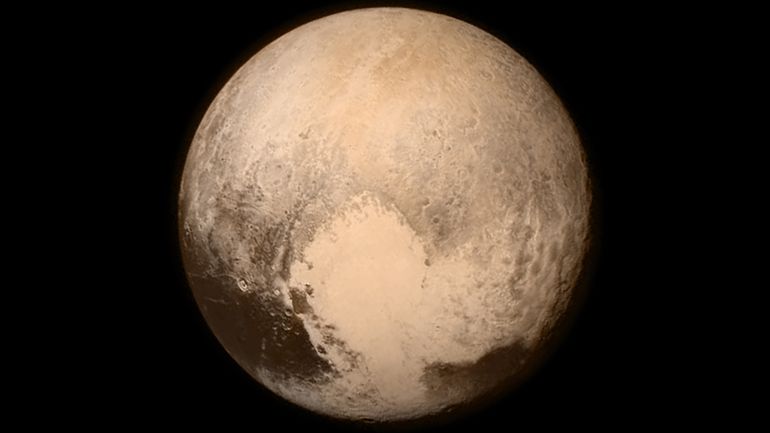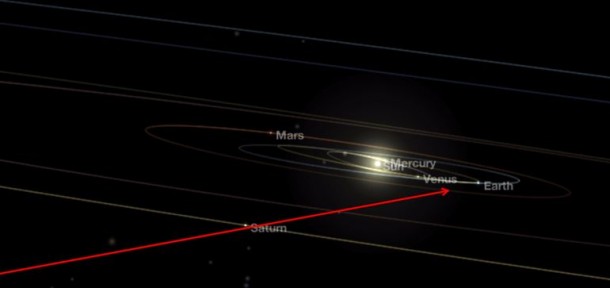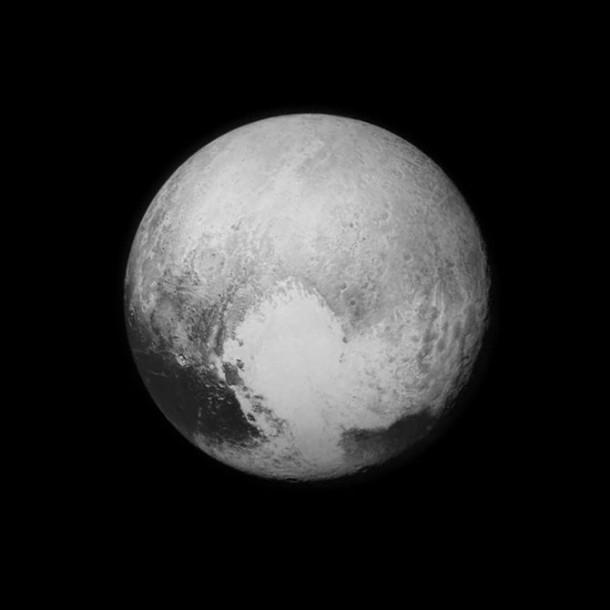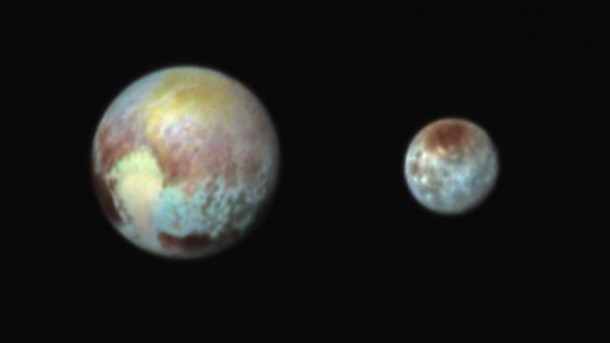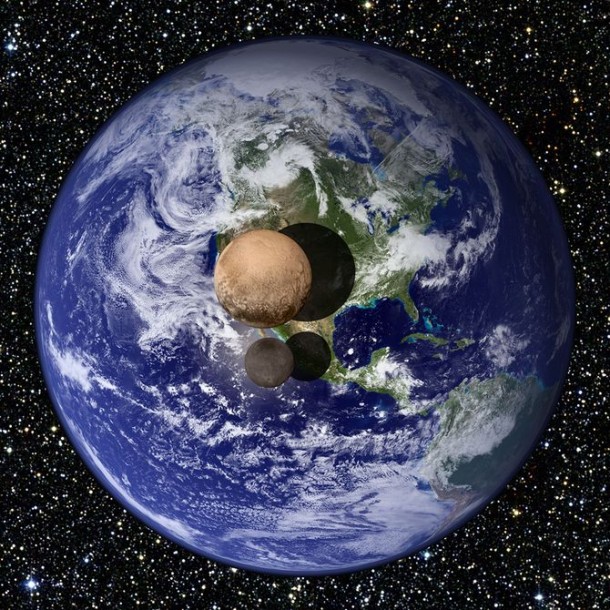Finally, we have the whole family portrait of the Solar System together in one place. Pluto is so far away from the rest of the pack that is has been difficult getting clear shots of its terrain and singular moon. The New Horizons space probe sent solely for the purpose of studying the icy planet has re-established contact with the NASA headquarters and sent some amazing pictures of the remote heavenly body. It is a great breakthrough for the space agency, and it will shed further light on unexplored parts of the solar system.
Pluto is a mammoth 4.47 billion kilometers away from our planet. It is so far that the radio signal travelling at the speed of light takes approximately four hours and twenty-five minutes just to reach us. Now that is a lot of distance. The magnified pictures that Hubble Telescope has been providing us over the years are not suitable for studying the minute details of the dwarf planet. So, NASA sent this probe to take real pictures of it from a relatively closer distance.
The project had to face several technical problems to get these elusive snaps. Since it takes 4.5 hours to transmit and receive a message, a re-alignment, no matter how minor it is can take 18 hours to be confirmed, and that is precisely what happened. When the probe was in the position to take the pictures, the main antennae weren’t pointing in the right direction towards Earth. It was realigned, and then those photos were sent. The Horizons probe thankfully has an HD camera in its inventory and was able to capture the planet in much detail.
So, finally, here is Pluto itself. Seems a lot like the Moon.
These pictures finally presented a visual tool to calculate the real diameter of Pluto, which had been debated quite a lot in recent times due to its status of dwarf planet. It came out to be 2370 Kilometers which is by far the largest heavenly body in the solar system beyond Neptune. The pictures have also shed light on Pluto’s history. A plain-like feature was discovered covering one thousand miles that had amassed meteor impacts during millions of years of planet’s existence.
The future of the unmanned space traveller is yet unclear as it has fulfilled its primary objective. It could rendezvous to further routes in the Kuiper belt, but it all depends on the fuel left in the probe. It was launched in 2006 from a Lockheed Martin rocket, and it is the fastest one ever built as it reached the Lunar orbit within nine hours. It was able to cover such enormous distance after a gravity-assisted push from planet Jupiter in 2007 helped it achieve 52,000 miles per hours speed. Still, it took nine years for the probe to make a flyby near the frozen planet at a distance of 12,500 Km. It is the final planet to be photographed entirely. Sun would be so proud to have its family in the same snap!

